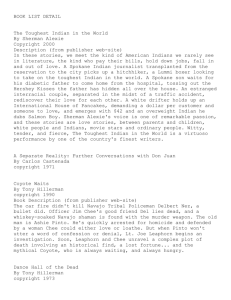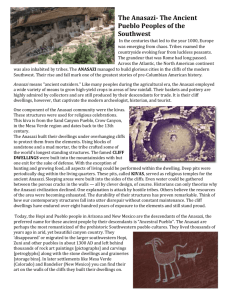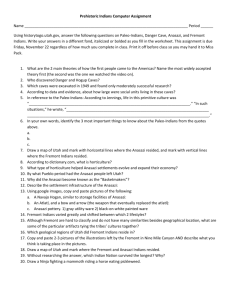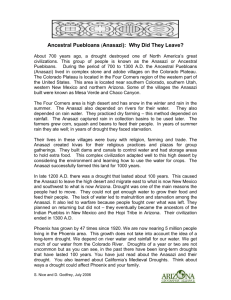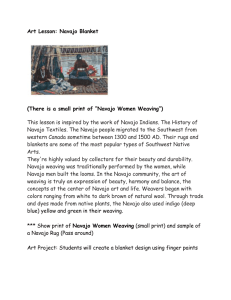Writing a Summary of a Fictional Work
advertisement
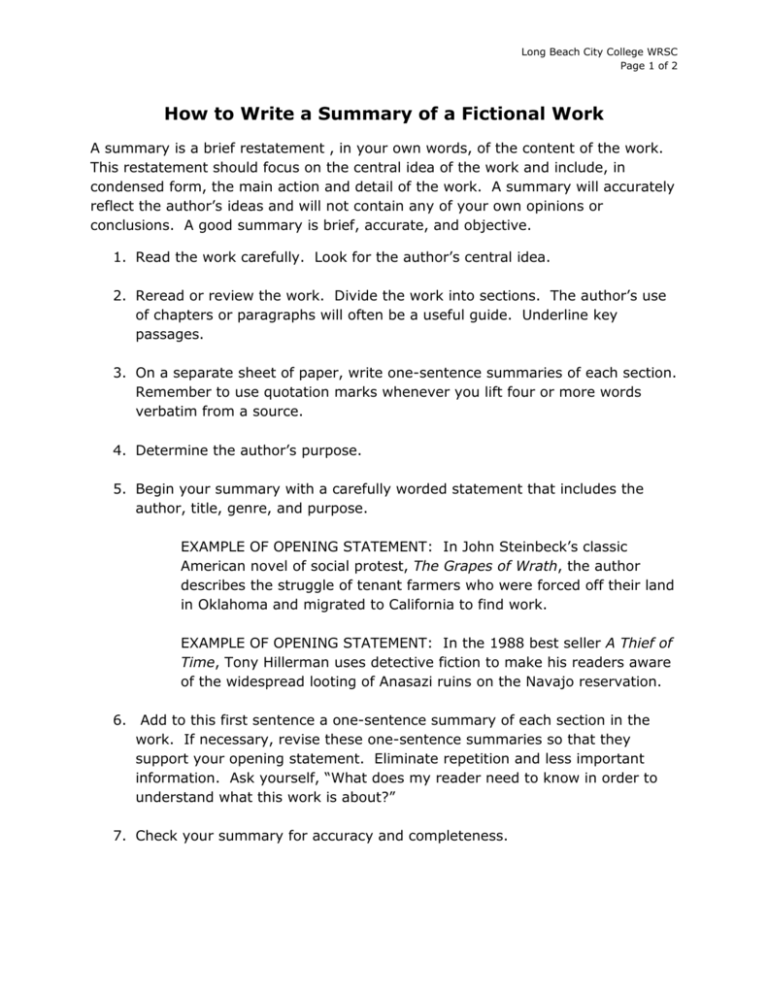
Long Beach City College WRSC Page 1 of 2 How to Write a Summary of a Fictional Work A summary is a brief restatement , in your own words, of the content of the work. This restatement should focus on the central idea of the work and include, in condensed form, the main action and detail of the work. A summary will accurately reflect the author’s ideas and will not contain any of your own opinions or conclusions. A good summary is brief, accurate, and objective. 1. Read the work carefully. Look for the author’s central idea. 2. Reread or review the work. Divide the work into sections. The author’s use of chapters or paragraphs will often be a useful guide. Underline key passages. 3. On a separate sheet of paper, write one-sentence summaries of each section. Remember to use quotation marks whenever you lift four or more words verbatim from a source. 4. Determine the author’s purpose. 5. Begin your summary with a carefully worded statement that includes the author, title, genre, and purpose. EXAMPLE OF OPENING STATEMENT: In John Steinbeck’s classic American novel of social protest, The Grapes of Wrath, the author describes the struggle of tenant farmers who were forced off their land in Oklahoma and migrated to California to find work. EXAMPLE OF OPENING STATEMENT: In the 1988 best seller A Thief of Time, Tony Hillerman uses detective fiction to make his readers aware of the widespread looting of Anasazi ruins on the Navajo reservation. 6. Add to this first sentence a one-sentence summary of each section in the work. If necessary, revise these one-sentence summaries so that they support your opening statement. Eliminate repetition and less important information. Ask yourself, “What does my reader need to know in order to understand what this work is about?” 7. Check your summary for accuracy and completeness. Long Beach City College WRSC Page 2 of 2 8. Revise your summary, inserting transitional words and phrases where necessary to ensure coherence. Avoid a series of short, choppy sentences: combine sentences for a smooth, logical flow of ideas. EXAMPLE OF COMPLETE SUMMARY: In his 1988 best seller A thief of Time, Tony Hillerman uses detective fiction to make his readers aware of the widespread looting of Anasazi ruins on the Navajo reservation. Lieutenant Leaphorn of the Navajo Tribal Police becomes interested in the disappearance of Dr. Eleanor Friedman-Bernal, an archeologist working out of Chaco Canyon, when he finds a meal, carefully prepared for an important visitor rotting in her refrigerator. Meanwhile, tracking down a backhoe bandit, Officer Jim Chee stumbles into two bodies near the backhoe at an Anasazi ruin on the reservation. The Navajo policemen, working separately, begin to find links between Friedman-Bernal’s disappearance and the two dead bodies. Leaphorn and Chee investigate an odd mix of characters, all seemingly involved in the illegal digging and selling of Anasazi pottery. Leaphorn’s investigation leads him to the missing archeologist, but he needs Chee’s help to rescue her. In this dramatic conclusion, Hillerman emphasizes that ancient Indian ruins are being pillaged by opportunists of all types—from “modern” Indians out to make a buck to scientists out to make a name for themselves.

